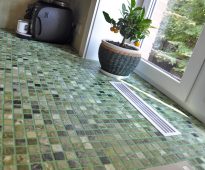 We update the tabletop in the kitchen with our own hands: ways, materials, tools
We update the tabletop in the kitchen with our own hands: ways, materials, tools
Drying for dishes in the closet - an indispensable thing in the kitchen.
The drying cabinet for dishes has long and firmly become an integral part of any kitchen unit.
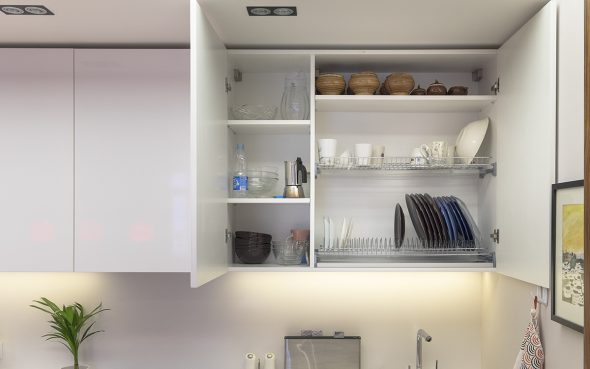
The dryer for ware in a case can be executed in several options.
As for completeness, material, shape and size, and at the place of installation - in a wall cabinet or in its lower part.
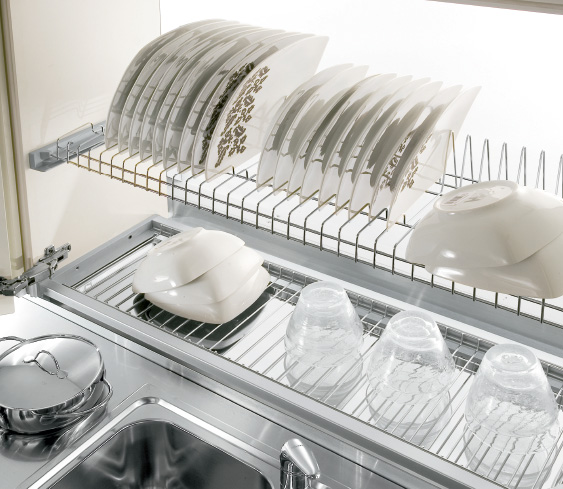
As a rule, the dryer for dishes consists of several independent departments.
Along with built-in dryers, removable ones are also used. But the latter are not widely used due to the fact that, despite the possibility of easy cleaning from contamination, due to the design features, they do not provide for adequate storage of dishes.
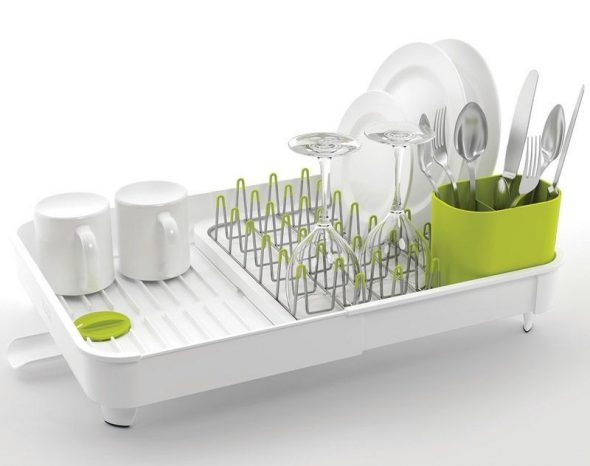
Open dryers are easy to use and unpretentious, in addition, they have a fairly low price.
According to their device, regardless of the design and manufacturer, material and size, all embedded “drying” are quite similar. In fact — it is securely fixed, mesh design, ensuring reliable fixation of the plates in the position "on the edge."
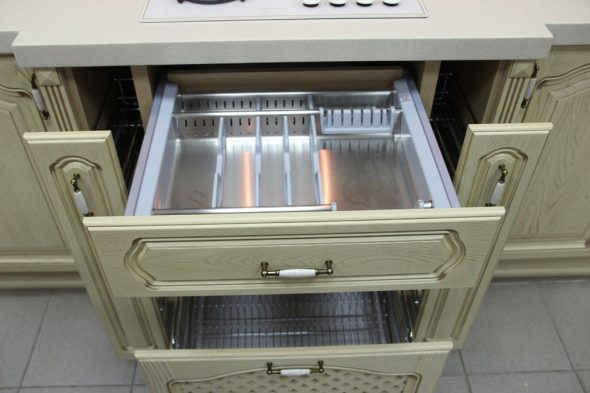
In most cases, a basket for cups and cutlery is included in the “drying” kit.
In almost any design, “drying” is necessarily completed with a tray to collect and retain moisture droplets that roll off the dishes.
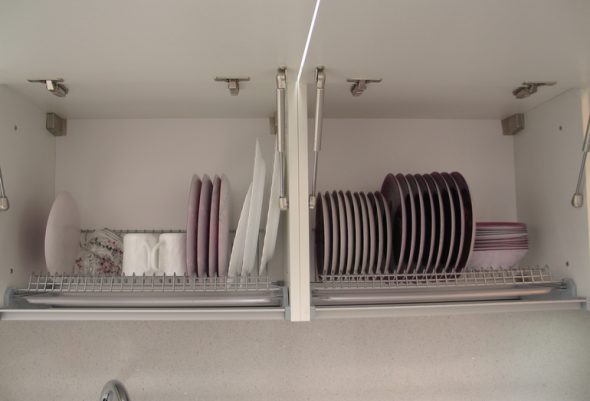
Sometimes manufacturers carry pallets with a drain fitting and drain tube.
Modern non-removable dryers are made from plastic, polished stainless steel and aluminum, chrome-plated and enameled steel.
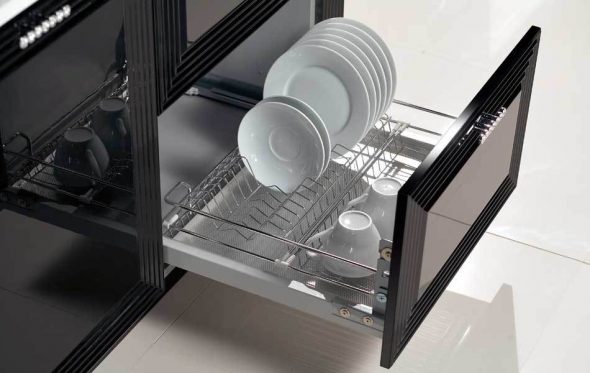
Each element of the system is made of durable material.
By type of installation modern built-in dishwasher dryers are divided into three main types:
- For placement in hinged front cabinets;
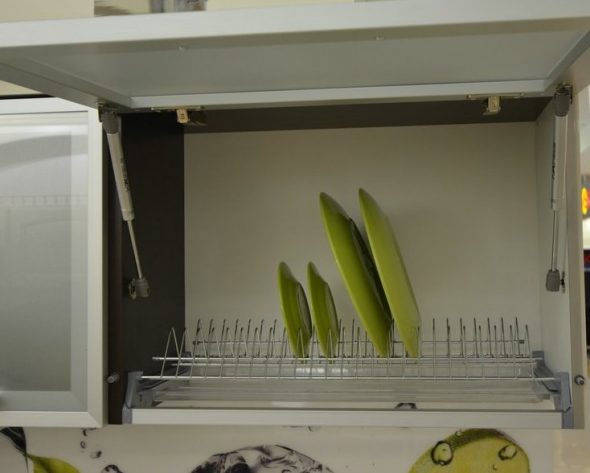
Thanks to the built-in drying dishes for dishes in the closet, your kitchen will find a more aesthetic and well-groomed appearance.
- For placement in wall corner cabinets;
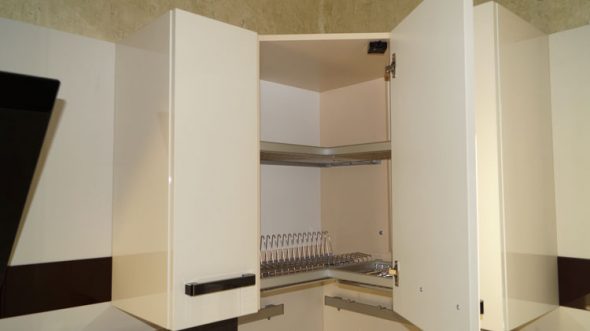
The advantage of built-in drying is that no dust will settle on the dishes.
- For placement in the lower floor cabinets.
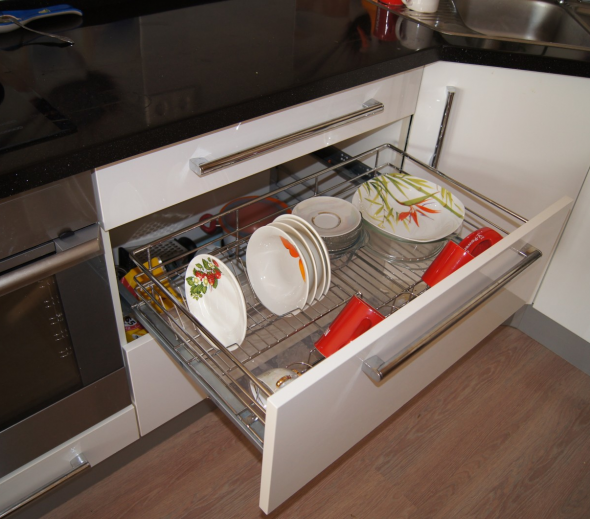
The dishes will be neatly folded and will not take up much space.
The most common and familiar all option is “drying” for dishes in the front wall cabinet.
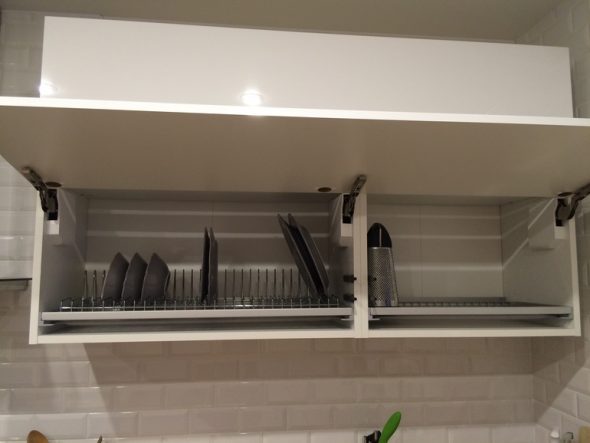
Dryers are available for cabinet sizes of various widths, from 350 to 1000 mm. With "step" from 350 to 1000 mm.
The width of the dryer takes into account the thickness of the cabinet walls, respectively, the width of the dryer itself is 32-36 mm less than declared. Accordingly, when choosing, one should pay attention to the marking, on the package either the chipboard thickness for which the product is designed, or the actual width of the product should be indicated.
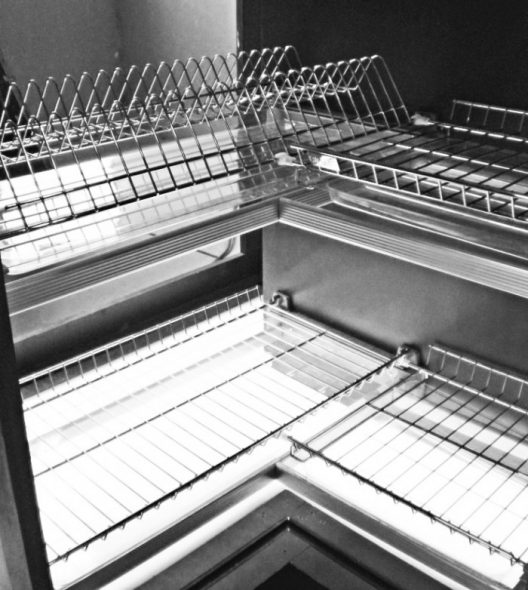
Dryers for corner cabinets have recently become more widely used.
By design, these dryers are similar to the front, but with a small addition in the form of half a full-size dryer. Such products are installed in an angular case in the L-shaped configuration.The undeniable advantage of such dryers is the ability to fully utilize the corner wall cabinet. The ease of use of such a dryer can not be compared with its frontal version.
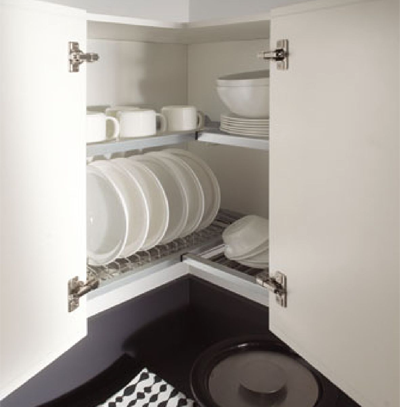
Access to the dryer is difficult due to the rather narrow facade of the corner cabinet. With the dimensions of the corner cabinet 600x600 mm, the width of its facade is only 400 mm.
Another noteworthy option for embedded dryers are products designed to be installed in the lower cabinets of a kitchen unit. Such dryers are carried out in the same way as ordinary drawers.
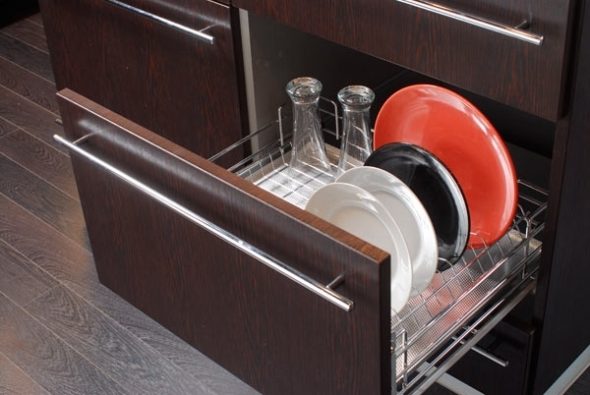
For mounting the dryers are usually used ball extension systems, either telescopic or flush mounted, similar to the systems "tandem."
The advantages of this solution are many. For example, if it is impossible to place the dryer classically, that is, in a wall cabinet (there may be many such reasons - the presence of a large number of windows or other reasons limiting the number of wall cabinets).
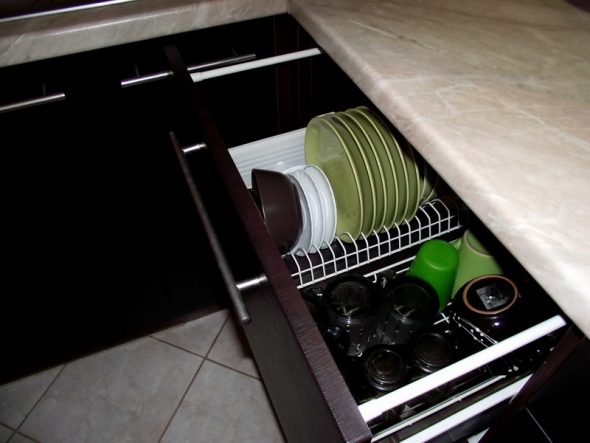
A design decision to abandon the entire upper "belt" of the kitchen or the location of the dishwasher dryer in the lower floor cabinet is often the only way out.
Also the placement of the dryer in the lower "belt" of the kitchen is justified if the hostess, who will use the kitchen furniture, has a small height.
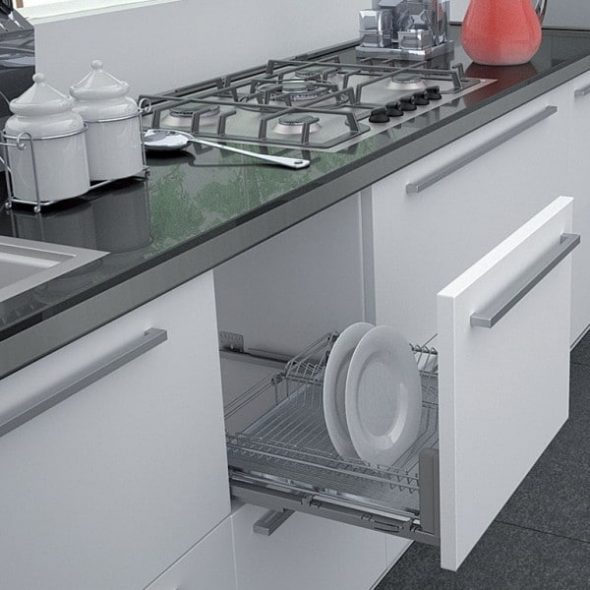
According to the norms of ergonomics, it is much more convenient for a small person to use dryers located in the lower “belt” of a kitchen set.
Content
Pluses built-in dryers for dishes
The advantages of using built-in dish dryers are time tested and therefore beyond doubt.
- Aesthetics.
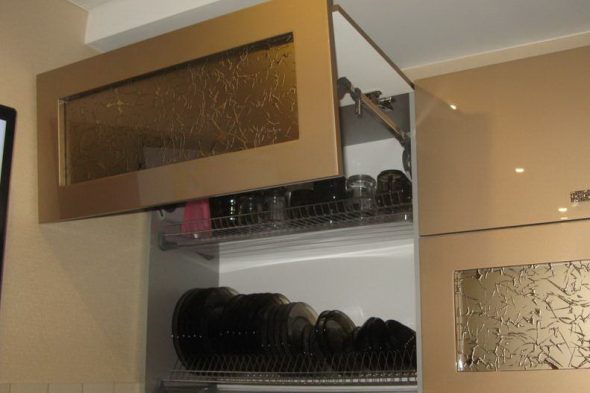
The dishes are covered with facades and do not attract excessive, unwanted attention.
- Hygiene.
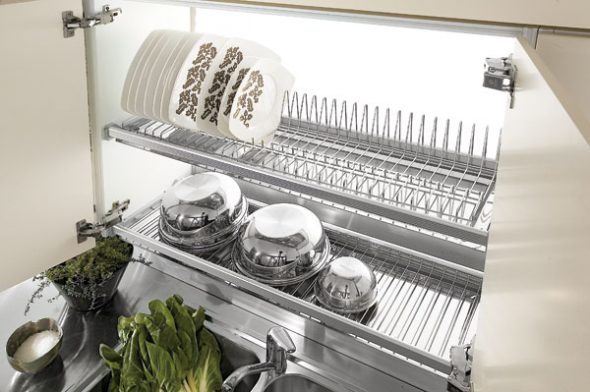
Regardless of whether to wipe the dishes or put them in “drying” immediately after washing, it will be clean anyway.
- Convenience store.
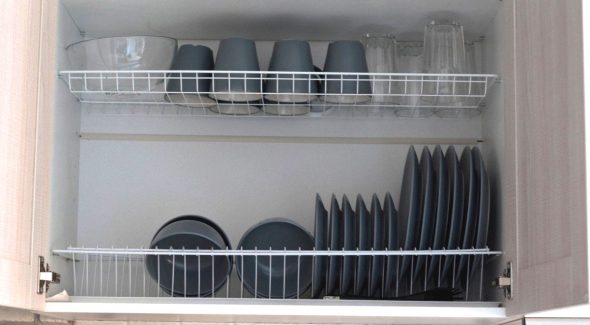
Built-in kitchen “drying” is intended not only for directly drying dishes, but also for storing them.
Drying provides the ability to easily access the desired container. All items are stored separately from each other, which allows to keep in drying not only ceramic or glass dishes, but also expensive designer clay, without fear for the quality of storage.
But there is in the use of built-in dryers for dishes and their disadvantages.
- The main one is the need to monitor the amount of water collected in the pan. Even if the drier tray is equipped with an automatic water drain system, no one is immune from clogging the drain tube.
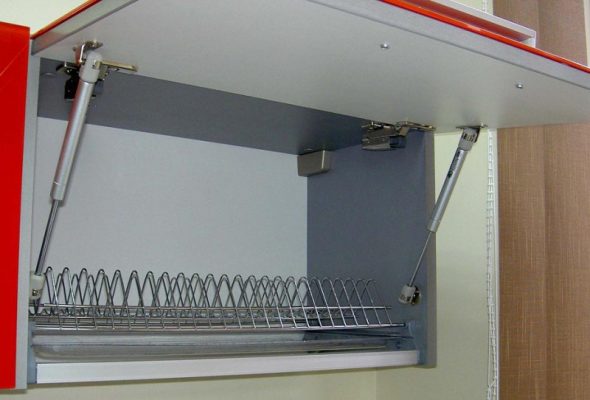
Water that regularly remains in the pan may eventually cause an unpleasant odor, so it is recommended to periodically wash and wipe the pan.
- Another disadvantage is the increased requirements for the cabinet with placed “drying” on the quality of ventilation.
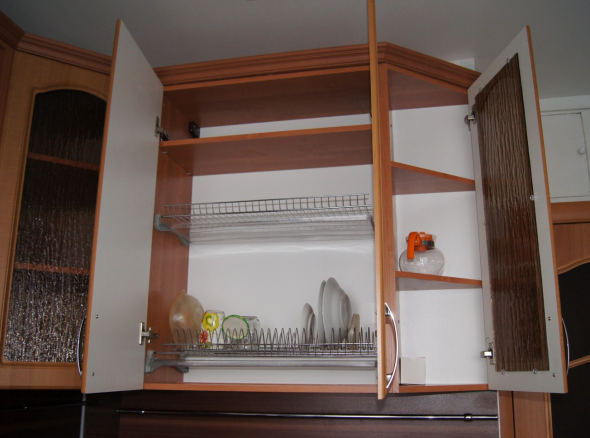
An ill-conceived, insufficient amount of ventilation inside the cabinet may be the cause of premature failure of the facade loops or even damage to the structural elements of the cabinet itself.
Rules for choosing a dryer in the closet
It is rather simple to choose high-quality “drying”. First of all, it is necessary to determine the choice of the material from which it is made. Plastic products are quite hygienic, but they lose a little in aesthetics.
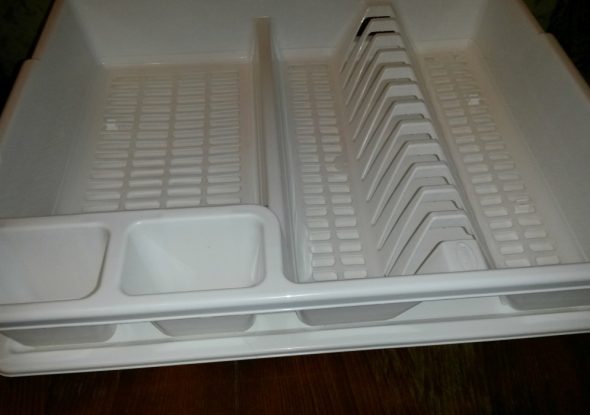
The plastic dryer behind the facade of wood, even veneered, looks out of place.
Metal “drying”, covered with enamel, is somewhat cheaper than its chrome-plated counterparts, but they lose in reliability and durability.
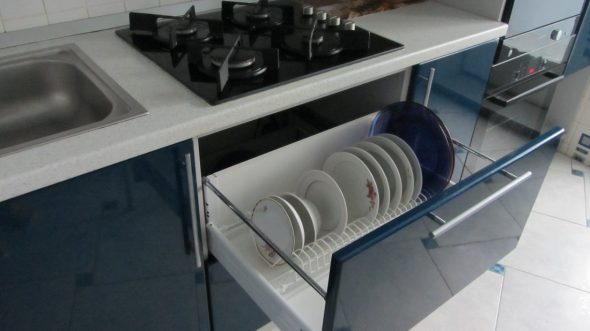
The enamel coating in case of accidental damage begins to quickly deteriorate and form centers of rust.
Chrome products although more expensive than other analogues, but meet the requirements of quality.
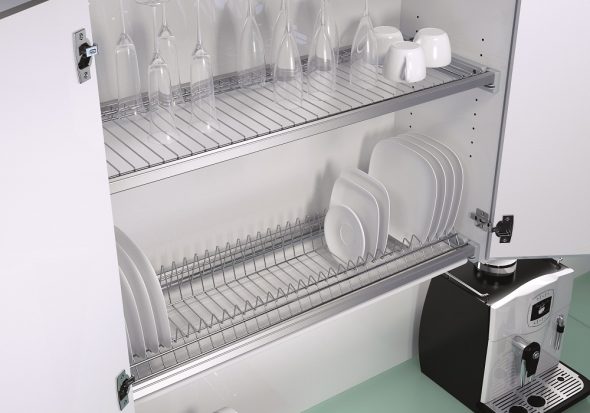
The chrome applied to the metal bars prevents the metal base from contacting moisture.
Secondarily, it is necessary to carefully determine the size of the dryer being purchased. All modern models of "dryers" provide some freedom of adjustment.
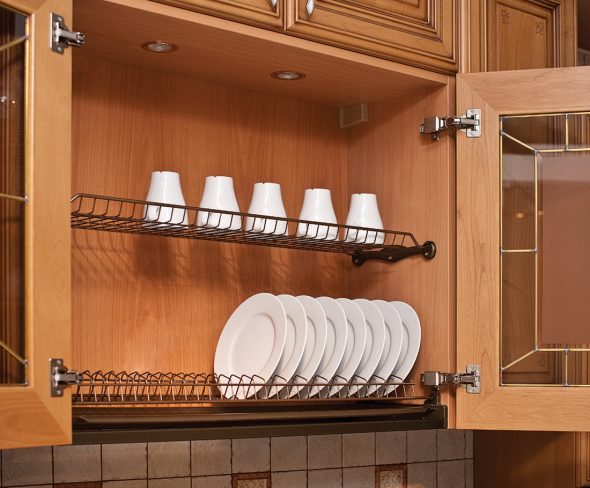
It is necessary to carefully monitor that the purchased item fits in its dimensions to the intended installation site.
Installing built-in kitchen "drying", you should follow a few simple rules. It is necessary to provide the possibility of removing and installing the pallet after the final installation of the dryer in place.
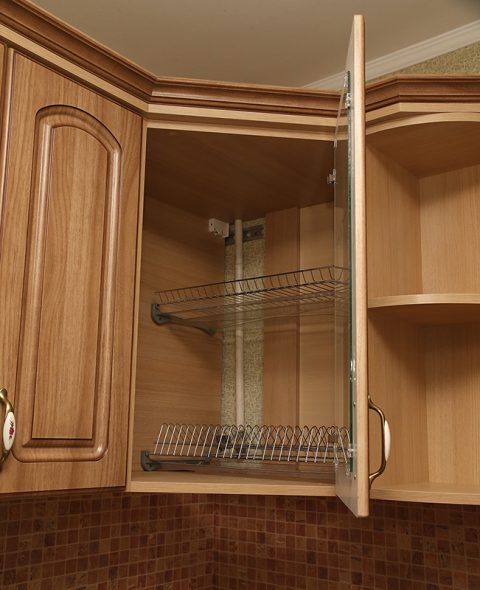
The distance between the “drying” for the plates and the shelf for the cups must be at least 300 mm.
It is better to install the dryer in the middle of the cabinet, this will allow placing dishes of maximum size in it.
VIDEO: Corner drying in the kitchen cabinet with his own hands.
Drying for dishes in the closet - 50 photos of stylish options for the kitchen:
 We update the tabletop in the kitchen with our own hands: ways, materials, tools
We update the tabletop in the kitchen with our own hands: ways, materials, tools
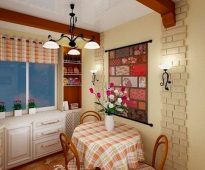 Tips for decorating the wall in the kitchen near the table
Tips for decorating the wall in the kitchen near the table
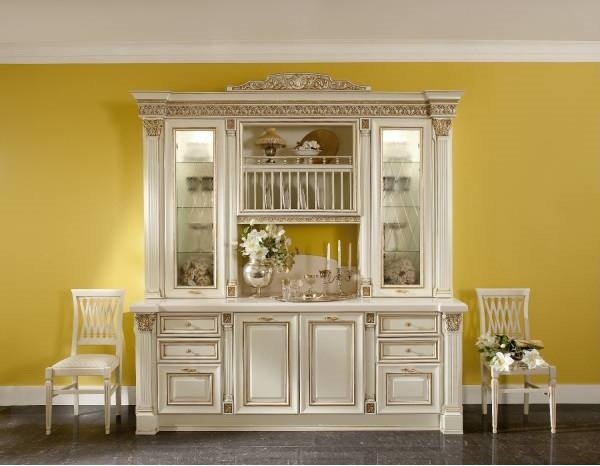 Buffet for the kitchen - a cultural tradition or a modern twist in the interior?
Buffet for the kitchen - a cultural tradition or a modern twist in the interior?
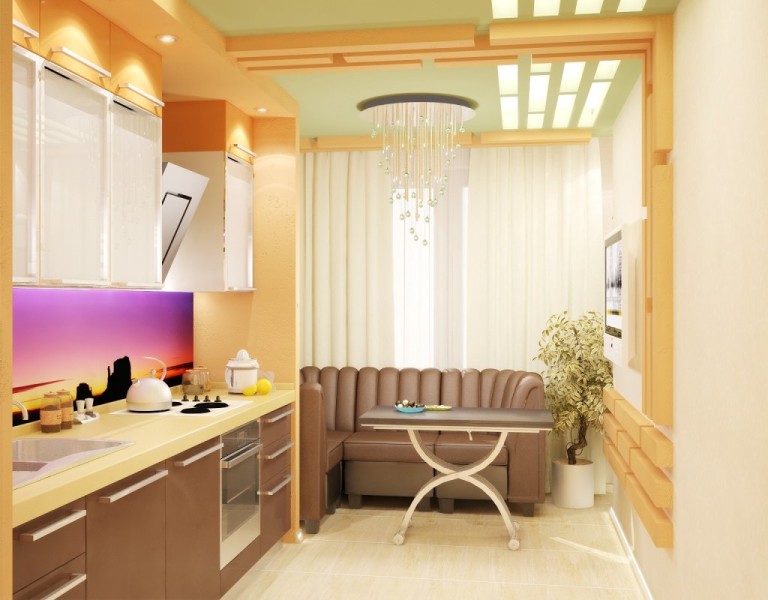 Kitchen design with a sofa (10 sq.m.)
Kitchen design with a sofa (10 sq.m.)
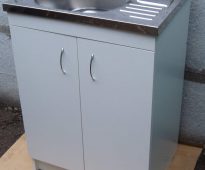 Making a cabinet under the sink for the kitchen with their own hands
Making a cabinet under the sink for the kitchen with their own hands
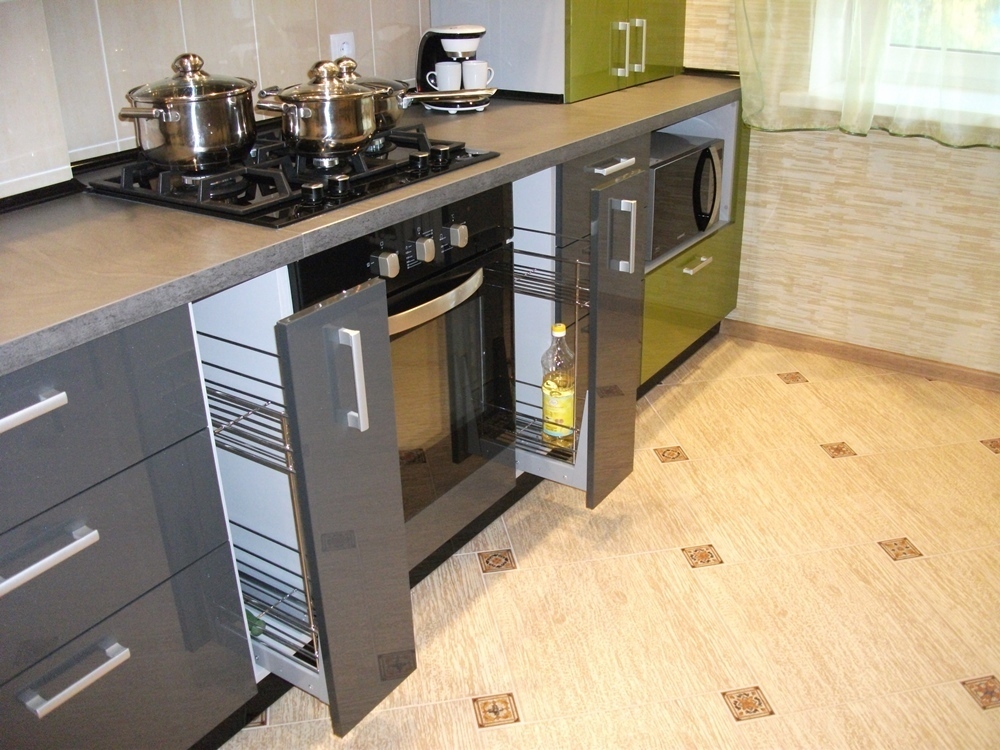 Bottle rack in the kitchen or set the pan not only in the nightstand.
Bottle rack in the kitchen or set the pan not only in the nightstand.


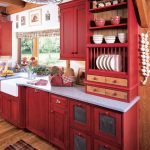


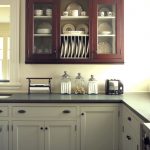
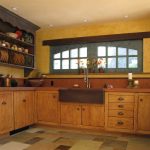


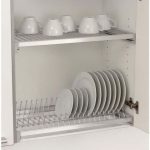
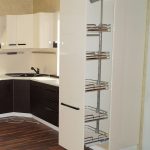
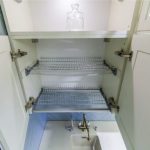
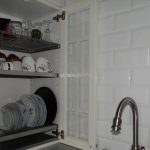



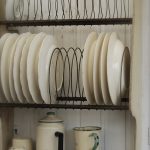
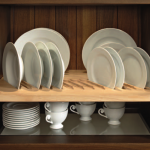
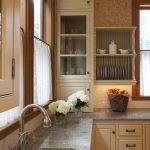



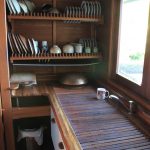
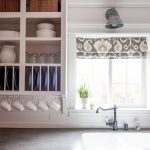

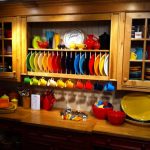
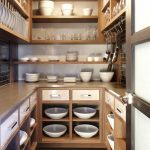

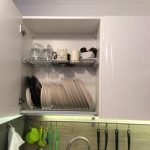
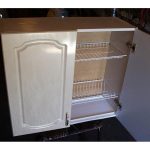
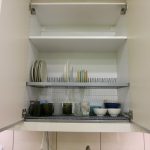
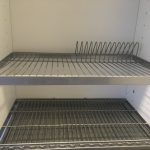

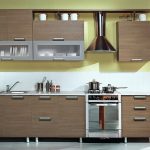
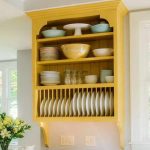
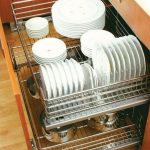
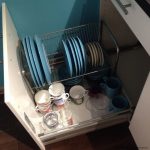
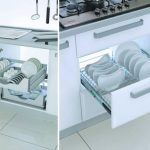
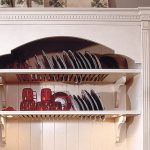

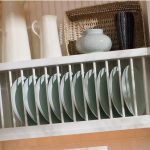
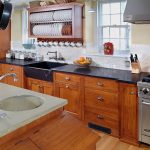
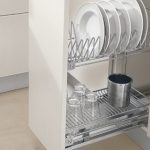


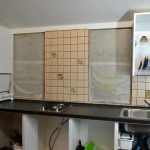
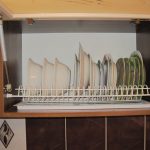



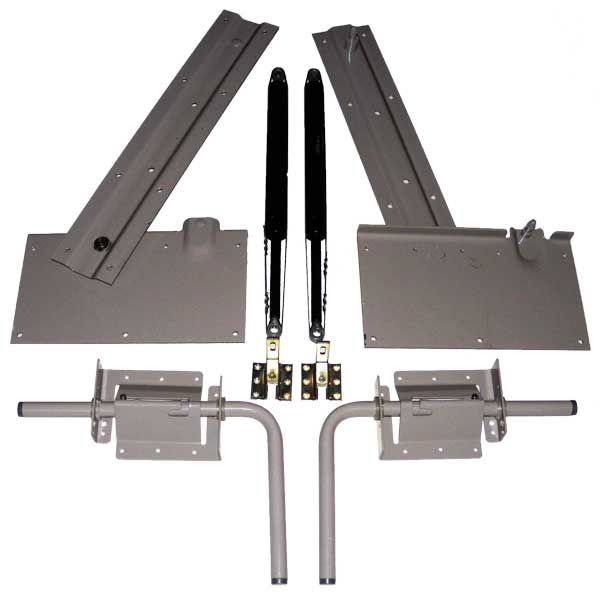
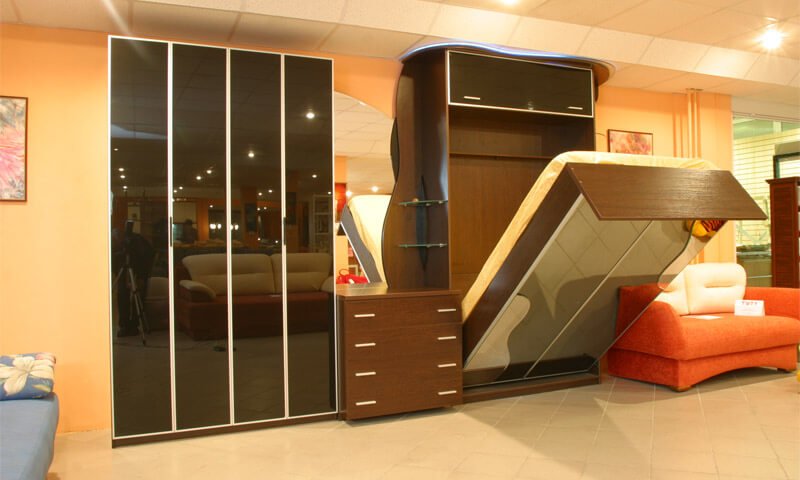
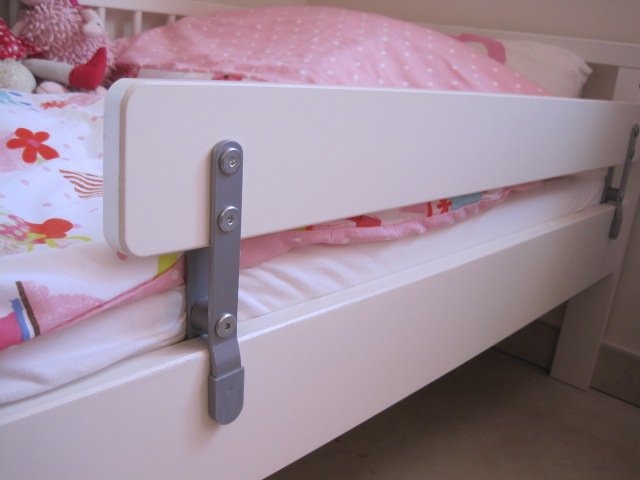
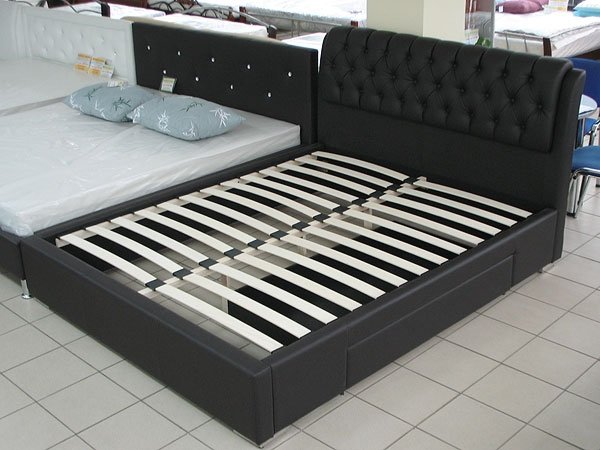
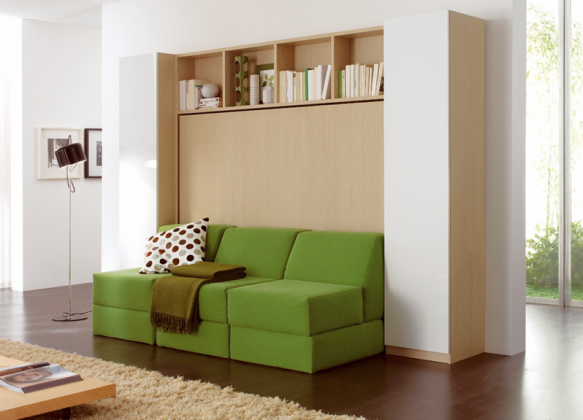
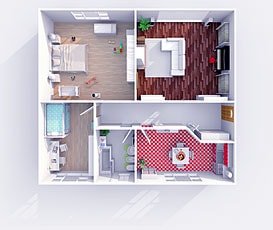

Good afternoon, the dryer has collapsed length 57, depth 28 needs a lower one in good condition, the bottom one is cracked) how can I order and how much will it cost ????